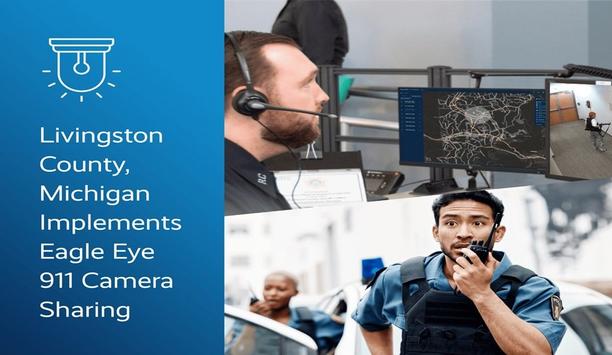 |
| Dallmeier and other partners demonstrated the interaction of physical security with IT security |
On a large collective stand at it-sa 2010 which was nearly 200 square metres in size, Dallmeier together with other partners in the Convergence Area, showed how physical security solutions can be cleverly linked with IT security components. The convergence of building technology, building security, video surveillance and information security was demonstrated at an unprecedented scale.
The interaction of individual systems was explained using a clear example: The hiring of a new employee in a firm. The visitors to the stand registered as "new employees". High resolution Dallmeier cameras took photos of the "employees", who within a few minutes received their own fully personalised company pass. These served as keys for lots of other demonstrations, e.g. the event-controlled video surveillance of crucial building zones, the opening of entrance doors, the automatic presence checking when entering sensitive data or the ID card-based release of documents to the printer.
Sebastian Rohr, Technology Manager/CTO at accessec and person in charge of the co-ordination of the Convergence Area explains: "A particular aspect of this convergence is the integration of video technology. That means in any place you wish to survey in detail, video technologies are capable of carrying out event-based recordings. Metaphorically that means: If an employee or a previously unknown person tries to break into your building or into specially secured areas using a pass; the video technology will be triggered at that moment. PTZ cameras, for example, start up automatically from a defined preset position, are activated and start the recording."
Furthermore, card technology is also widely used in the IT sector. For example when an employee physically signs into a part of the building, they then have authorisation to log on to a PC in that area. If the ID card is removed from the computer, it will be locked. If the employee then goes to another area of the building, they can - triggered by the physical security - log on again in this new area. If they now go back to their previous workplace, but a colleague keeps the door open and they themselves do not trigger the building technology with their pass, then the system would not know, that they had changed areas of the building and they would have no access to the IT system. The advantage of a solution such as this, is that the employees cannot swap passes with one another, and for example cleaning staff or third parties are not capable of obtaining access to IT and sensitive data with the passes.
The integration of different sectors happens over the interface standard ONVIF - thereby this standard was used for the first time outside of the video sector |
Premiere of the first universal, practical ONVIF implementation Sebastian Rohr returns once more to the theme of video surveillance: "It is of course very interesting, that exactly in these unsuccessful attempts to log onto information technology systems, there is in turn the opportunity to start dedicated video recordings. Here you see the entire scope of a completely planned and executed convergence solution, which spans from the entry into the building, to time registration and video surveillance, and towards an integrated card life cycle management."
The integration of different sectors happens over the collective interface standard ONVIF (Open Network Video Interface Forum) - thereby this standard was used for the first time outside of the video sector. Sebastian Rohr said: " We have the opportunity to link together lots of other sectors, which until now were not integrated, because the system is based on an open standard. This open standard is supported by all the members of the Convergence Area 2010. With this, we eventually establish a new industry movement in physical building security towards more openness, more standards and more interoperability, in order to make simple integration of individual system components possible, for you the customer."
Good to know: all Dallmeier IP cameras support ONVIF standards
Dallmeier has actively participated in the development of ONVIF standards as a "contributing member" since 2009.
All Dallmeier IP cameras are ONVIF compatible. Besides the cameras, the Network Video Transmitters (NVT), standards for receiving devices like Network Video Storages (NVS) are also currently being developed. Here Dallmeier also takes on a pioneering role, and will shortly introduce the first ONVIF compatible servers and recorders.
Anybody who already owns a Dallmeier IP camera, can subsequently upgrade it to achieve ONVIF conformity!


















